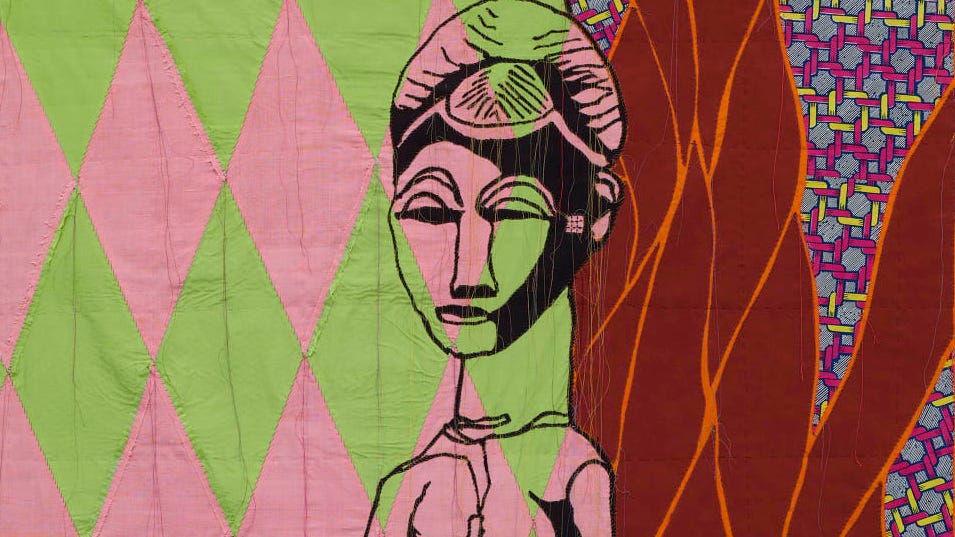Yinka Shonibare, Modern Magic (Studies of African Art from Picasso’s Collection) V (detail), 2020–2021. Patchwork, appliqué, embroidery, and Dutch wax printed cotton, 78 3/4 x 55 1/8 in (200 x 140 cm); Frame: 85 7/8 x 64 3/8 in (218.1 x 163.5 cm). Fine Arts Museums of San Francisco, Phyllis C. Wattis Fund, 2021.54 ©️ Yinka Shonibare/Artist Rights Society (ARS), New York
About African art
The number of rare and unusual works in the African art collection at the de Young museum speaks to the evolution of culture and creativity in Africa.
The collection contains approximately 300 world-class objects. Artworks range from an ancient Dogon wood figure from 11th-to-12th-century Mali to the work of renowned contemporary artist El Anatsui, a sculptor from Ghana who transforms everyday materials into striking installations. Outstanding examples of masks and figural sculptures from important art-producing cultures in West and Central Africa are on view in the African art gallery. A distinguishing feature of the gallery is its focused approach to displaying African art, including presentations from the Yoruba of Nigeria and the Asante of Ghana.
The collection originated with the city’s purchase, through the efforts of Michael H. de Young, of African art exhibited at the 1894 California Midwinter International Exposition held in San Francisco’s Golden Gate Park. Since then, the collection, like those of most major American museums, grew in a random fashion rather than by design—enriched by purchases but mostly by donations and gifts of premier pieces from Bay Area art collectors. The collection steadily grew, however, when the arts of Africa, Oceania, and the Americas department was founded in 1971.
Most of the collection dates from the 19th century through the mid-20th century, when tremendous political, economic, and religious change impacted art and culture in many societies through colonialism, imperialism, war, and globalism. Today, the African art gallery is going through an exciting transformation, and visitors can look forward to gaining new perspectives on the past and engaging in meaningful, present-time conversations about African art.
